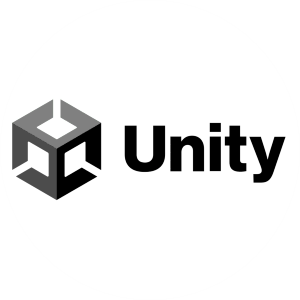
-
Unity – Detailed Explanation : Software for game development and 3D modeling.
Unity is one of the most powerful and widely used game engines for developing 2D and 3D applications across multiple platforms. Below is a comprehensive breakdown based on the categories you provided.
1- On which platform are the tools used?
Unity supports cross-platform development, meaning you can develop games and applications for multiple devices and operating systems, including:
✅ Operating Systems (For Development)
- Windows (Windows 10, 11)
- macOS (macOS 10.14 or later)
- Linux (Beta version support)
✅ Supported Platforms (For Deployment)
- PC: Windows, macOS, Linux
- Mobile: Android, iOS
- Gaming Consoles: PlayStation, Xbox, Nintendo Switch
- VR/AR: Oculus, HTC Vive, HoloLens, Magic Leap
- Web & Cloud: WebGL, HTML5, Cloud-based applications
⚠️ Note: Some platforms require additional SDKs and licenses (e.g., iOS requires a Mac for deployment).
2- What hardware requirements are needed?
Unity has different hardware requirements depending on the complexity of your project.
✅ Minimum PC/Laptop Requirements
- Operating System: Windows 10 (64-bit) or macOS 10.14+
- Processor: Intel Core i5 (or AMD equivalent)
- RAM: At least 8GB (16GB recommended for larger projects)
- Graphics Card: DX10, DX11, or DX12 compatible GPU
- Storage: At least 15GB of free space (SSD recommended)
✅ Recommended for High-End Development (VR, AR, AAA Games)
- Processor: Intel Core i7/i9 or AMD Ryzen 7/9
- RAM: 16GB or more
- Graphics: NVIDIA RTX 30/40 series or AMD equivalent
- Storage: 500GB+ SSD
⚠️ Game development with Unity can be resource-intensive, especially for 3D projects.
3- Installation and Membership Stages
Installation Steps
- Download Unity Hub from https://unity.com/download.
- Install Unity Hub, then log in with a Unity account.
- Choose a Unity version (LTS recommended for stability).
- Select platform modules (Android, iOS, WebGL, etc.).
- Install Visual Studio (optional, but needed for coding in C#).
- Open Unity Hub, create a new project, and start developing.
Membership & Licensing Options
- Unity Personal: Free for individuals and small businesses (Revenue < $100K).
- Unity Plus (Discontinued in 2023).
- Unity Pro: Paid version for professional game studios ($2,040/year).
- Unity Enterprise: For large-scale teams and companies.
4- What can it be used for?
Unity is primarily used for game development, but it also has applications in:
✅ 2D & 3D Game Development (PC, console, mobile)
✅ Virtual Reality (VR) and Augmented Reality (AR)
✅ Simulation and Training Programs (used in aerospace, healthcare, military)
✅ Film & Animation (Cinematics, real-time rendering)
✅ Automotive & Engineering (Simulations and prototyping)
✅ Architecture & Construction (3D visualization, digital twins)
✅ AI & Machine Learning ApplicationsIt’s widely used in vocational and technical training to develop realistic simulations.
5- What is its prominent feature compared to other tools?
🟢 Cross-platform development – Develop once, deploy on multiple platforms.
🟢 Powerful physics and rendering engine – Realistic visuals and animations.
🟢 VR & AR support – Strong integration with VR headsets.
🟢 Rich asset store – Thousands of free and paid assets.
🟢 C# programming language – Easier than C++ (used in Unreal Engine).
🟢 Large community and extensive documentation.🔹 Compared to Unreal Engine: Unity is lighter, easier to learn, and better for mobile and indie games.
🔹 Compared to Godot: Unity has more features and professional support, but Godot is open-source.6- Sample Application Made with Pictures
Simple 3D Game: “Roll-a-Ball” (Beginner Example)
Goal: The player controls a rolling ball to collect objects in a 3D world.
Step 1: Create a New 3D Project
- Open Unity Hub → New Project → 3D Template.
Step 2: Add Game Objects
- Create a Plane (Right-click in Hierarchy → 3D Object → Plane).
- Create a Sphere (Right-click → 3D Object → Sphere → Rename as “Player”).
- Add a Camera (Position it above to see the player).
Step 3: Add Physics (Roll Ball Effect)
- Select the Sphere (Player).
- In the Inspector Panel, click Add Component → Rigidbody.
Step 4: Add Movement Script (C#)
- Right-click in Assets → Create C# Script → Name it PlayerMovement.cs.
- Double-click to edit in Visual Studio and enter the code:
using UnityEngine;
public class PlayerMovement : MonoBehaviour
{
public float speed = 10.0f;
void FixedUpdate()
{
float moveHorizontal = Input.GetAxis(“Horizontal”);
float moveVertical = Input.GetAxis(“Vertical”);
Vector3 movement = new Vector3(moveHorizontal, 0.0f, moveVertical);
GetComponent<Rigidbody>().AddForce(movement * speed);
}
}
- Attach the script to the Player (Sphere).
- Press Play to test the rolling ball movement.
📌 Example Screenshot
7- Which courses can it be used in and is compatible with?
Unity is widely used in vocational and technical education, including:
✅ Game Development & Computer Science – C# programming, UI/UX design.
✅ Mechanical & Mechatronics Engineering – Physics simulations.
✅ Architecture & Construction – 3D visualization, digital twins.
✅ Aerospace & Automotive – Simulating mechanical systems.
✅ Animation & Digital Media – 3D animation, VR experiences.
✅ Robotics & AI – Machine learning simulations in Unity ML-Agents.
✅ Occupational Health & Safety – VR training simulations.8- Is it free?
✅ Yes! Unity Personal Edition is free if your revenue is under $100,000 per year.
- For professional studios, Unity Pro and Enterprise are paid versions.
- Some assets and plugins in the Unity Asset Store require payment.
9- Links Related to Unity
🔗 Official Website: https://unity.com
🔗 Download Unity Hub: https://unity.com/download
🔗 Beginner Tutorials: https://learn.unity.com
🔗 Unity Asset Store: https://assetstore.unity.com
🔗 Documentation: https://docs.unity3d.com